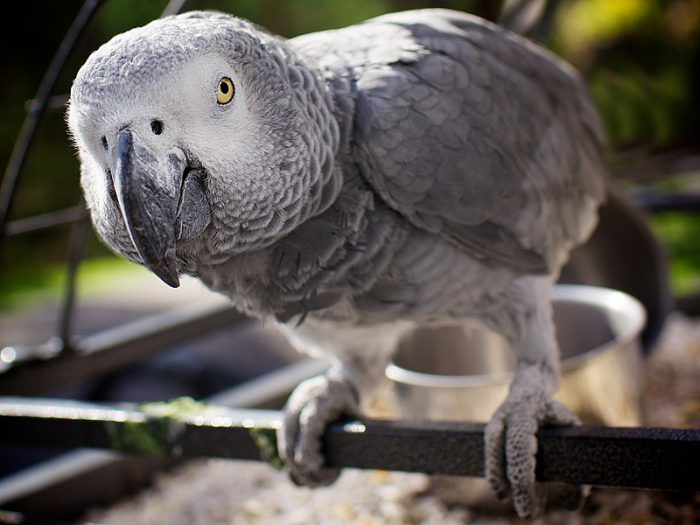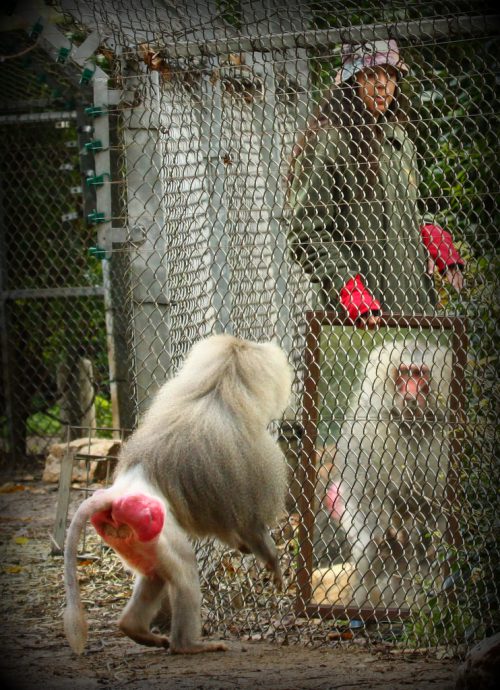Are you ready to dive into a heavy topic this Thursday morning?
How about the state of consciousness in dogs?
That's because a brand new study claims to have proof that dogs are 'body aware'.
In the study, dogs were asked to retrieve a toy and bring it to a person. Standard dog stuff, right?
But the catch is that the toy was attached to a blanket that the dog was sitting on. So in order to grab the toy, they would need to understand that it was connected to a blanket that was stuck. And that their own body was the reason that the blanket was stuck.
In other words, they needed to understand that they were in the way. Which 32 dogs of different breeds and sizes were all able to do in the study. And that shows body awareness.
What does that really mean? Is it a big deal? Let's dive deep into ... animal consciousness!
What is consciousness?
Our consciousness allows us to understand concepts like math. (Getty Embed)
Did we really just ask that? Because the world's greatest thinkers have tried to answer that question for centuries.
At first, consciousness seems fairly simple. It is about being aware and responsive to your surroundings.
You are showing off your own consciousness when you avoid a tree in your way, notice an object zooming past your field of vision, or respond to a sound. But philosophers and scientists both argue that there are many other things that go into consciousness.
Such as being aware of ideas and concepts. This can be understanding language, math, or science, or understanding why a social cause matters.
Being self aware
Another one of them is self awareness. This is basically the ability to recognize yourself.
Hey, that's my voice! That's me in the mirror!
It's also about having feelings and thoughts about yourself and how you 'fit in'. Those are my ideas! That's my place in this social group!
Being self aware is an extra step in consciousness because it requires something more than just responding to an outside stimulus (like a bright light or heat). Even the most basic living things—like bacteria and plankton—respond to that kind of stuff. But they don't think of themselves as individuals.
They don't think at all!
Right?
How do you measure self awareness?

Grey parrots are an animal with a level of self-awareness that is very close to what humans display. (Wikimedia Commons)
Ah. This is where things get really tricky.
Because, sure, it might be easy for us to say that an amoeba is not sitting there floating in a stream worrying about whether or not the other amoebas like them and will come to their birthday party next week. Never mind knowing what a birthday is. Or a week.
But what about spiders? Geckos? Salmon? Chimps? Birds?
Dogs?
Where does self awareness begin? And how do we understand how another animal sees its world if we can't speak a common language and communicate these things to one another?
Trying to understand

This baboon is one of the species that has taken—and failed—the mirror test. (Wikimedia Commons)
This is what this dog study is all about. We know dogs are intelligent, and that they form social bonds with both other dogs and humans. But do they think of themselves as individuals? And do they understand how their own body affects everything around them?
In the past, researchers have used a test called a mirror test to see if an animal has self awareness. This essentially tests whether or not an animal can recognize themselves in a mirror as them, not just another animal in their species. So far the great apes and dolphins are among the few animals who have passed this test.
Dogs have not.
But other researchers have argued that testing dogs based on sight is not fair, because that's not how dog brains work. They rely more on smell and hearing than sight to understand their world. Which is why tested have been done to see if dogs can recognize their own personal scent apart from other dog scents in their species.
Which dogs can.
Where does it leave us?
Is this dog just running with a ball? Or is it trying to improve on its personal best speed while carrying an object? (Getty Embed)
There's a good reason why consciousness and self awareness has been argued for millennia by thinkers. It's a very difficult thing to define exactly.
(That's why it's also okay if you feel a bit exhausted by this post right now and need a big brain break!)
And the same goes for animal consciousness. But one thing appears to be true.
The more that researchers investigate how other living things see their world, the more they are finding that many animals have a rich understanding of both the world and themselves. Is it the same as how humans see it? No.
But as this study shows, dogs have some awareness of their own bodies. Which is something that both they and humans can relate to. Incidentally, human babies gain this ability when they're about five months old.
Now go and hug your body (and brain) for completing this very thought-provoking post!
 Is this dog just hanging out? Or is it thinking about the meaning of life? (ID 451563 © Chris Bence | Dreamstime.com)
Is this dog just hanging out? Or is it thinking about the meaning of life? (ID 451563 © Chris Bence | Dreamstime.com)









